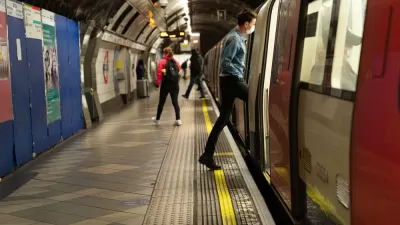Now that everyone understands what an exponential curve looks like, how it works, and how it brings life-threatening risk to their lives, it might be time to re-examine the realities of climate change, too.

Howard Kunreuther and Paul Slovic credit the coronavirus with teaching many more people in the world the concept of an exponential curve: “in which a quantity grows at an increasing rate over time, as the number of people contracting the virus currently is doing.”
Exponential growth is a hard concept for many people to grasp, according to Kunreuther and Slovic, until faced with the realities of a crisis. But the effects of climate change will work the same way, they argue.
And if there’s any silver lining in this mess, it’s that the coronavirus pandemic is teaching us a valuable lesson about the perils of ignoring destructive processes—and perhaps even larger, longer-term disasters—that increase exponentially. Even if growth looks mild in the moment—think of the earliest segments on an exponential curve like the red line shown in the illustration above—it will soon enough be severe. In other words, delay is the enemy.
The signs of exponential increase of carbon dioxide in the atmosphere are already there, according to the article. Like with coronavirus, delaying a worldwide response will have dire consequences in the future.
FULL STORY: What the Coronavirus Curve Teaches Us About Climate Change

Maui's Vacation Rental Debate Turns Ugly
Verbal attacks, misinformation campaigns and fistfights plague a high-stakes debate to convert thousands of vacation rentals into long-term housing.

Planetizen Federal Action Tracker
A weekly monitor of how Trump’s orders and actions are impacting planners and planning in America.

In Urban Planning, AI Prompting Could be the New Design Thinking
Creativity has long been key to great urban design. What if we see AI as our new creative partner?

King County Supportive Housing Program Offers Hope for Unhoused Residents
The county is taking a ‘Housing First’ approach that prioritizes getting people into housing, then offering wraparound supportive services.

Researchers Use AI to Get Clearer Picture of US Housing
Analysts are using artificial intelligence to supercharge their research by allowing them to comb through data faster. Though these AI tools can be error prone, they save time and housing researchers are optimistic about the future.

Making Shared Micromobility More Inclusive
Cities and shared mobility system operators can do more to include people with disabilities in planning and operations, per a new report.
Urban Design for Planners 1: Software Tools
This six-course series explores essential urban design concepts using open source software and equips planners with the tools they need to participate fully in the urban design process.
Planning for Universal Design
Learn the tools for implementing Universal Design in planning regulations.
planning NEXT
Appalachian Highlands Housing Partners
Mpact (founded as Rail~Volution)
City of Camden Redevelopment Agency
City of Astoria
City of Portland
City of Laramie





























